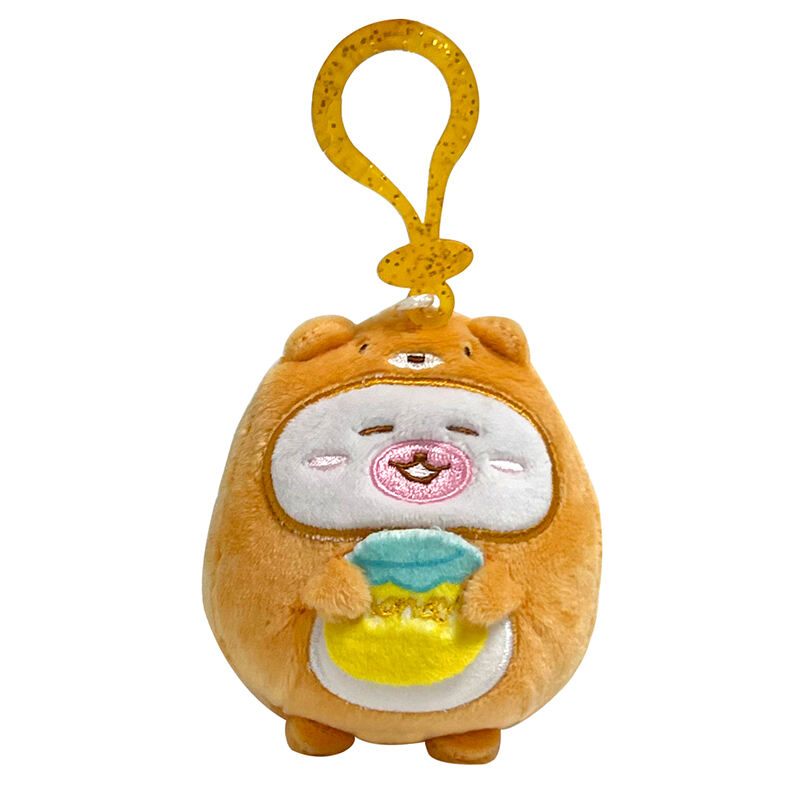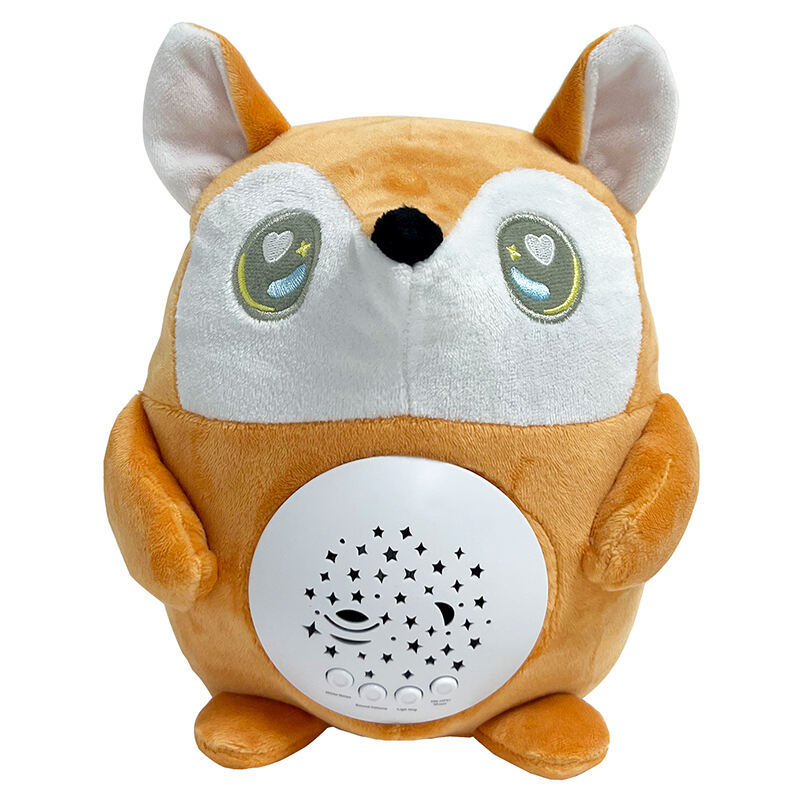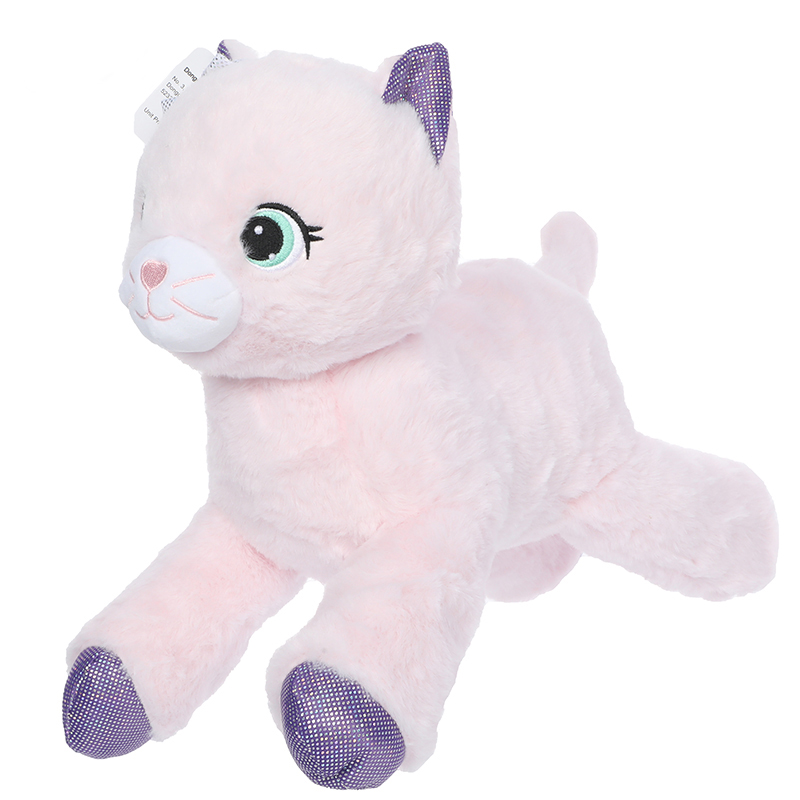Recycled PET (rPET) has rapidly become a cornerstone in the sustainable production of plush toys, addressing the critical issue of plastic waste. By repurposing used plastic bottles, rPET reduces the burden on landfills and oceans, providing a sustainable source material for creating stuffed animals. The process involves collecting, cleaning, shredding, and extruding PET plastic into yarn, subsequently woven into plush toy fabric. This practice significantly lowers the carbon footprint compared to traditional virgin polyester, making it a preferred option among eco-friendly manufacturers. Notably, using recycled materials can slash energy consumption by up to 60%, offering clear environmental benefits. Consequently, rPET not only contributes to reducing plastic pollution but also supports the shift towards greener manufacturing processes in the toy industry.
Organic cotton and natural fibers are gaining traction as environmentally responsible alternatives in the creation of plush stuffed animals. These materials are cultivated without pesticides or synthetic fertilizers, promoting healthier ecosystems and mitigating the risk of exposing consumers to harmful chemicals. Additionally, fibers such as bamboo and hemp are biodegradable and provide an exceptionally soft texture, further appealing to both eco-conscious buyers and children who cherish plush toys. Cultivating organic cotton, in particular, can lead to up to 88% less water consumption compared to conventional cotton farming, highlighting its environmental advantage. As awareness about the environmental impacts of synthetic fibers grows, more consumers are selecting plush toys made from organic materials, bolstering demand for plush products that are gentle on both the planet and the skin.
Bamboo and hemp represent swiftly renewable resources, offering impressive sustainability credentials to eco-friendly plush toys. Bamboo, capable of reaching maturity in three to five years, is among the most sustainable options in the industry. Similarly, hemp requires much less water and no pesticides, enhancing its appeal as an eco-friendly choice. Both materials possess natural hypoallergenic and antimicrobial properties, ensuring skin-safe and non-irritating qualities, ideal for children's the-sensitive-skin products. Besides supporting sustainability, integrating bamboo and hemp in plush toy manufacturing aligns with the increasing consumer demand for environmentally conscious products. This shift not only reduces ecological impact but also addresses the growing market for toys that prioritize eco-friendliness and child safety without sacrificing quality or comfort.
The Global Recycled Standard (GRS) plays a pivotal role in the plush toy industry by ensuring that recycled materials are genuinely used in products. This certification is crucial as it provides consumers with a reliable way to identify eco-friendly options, enhancing trust in sustainable product claims. To achieve GRS certification, compliance with stringent environmental and social criteria throughout the supply chain is mandatory, ensuring complete traceability of the recycled materials used. Such third-party validation not only bolsters consumer confidence but also positively influences purchasing behaviors. Recent market research indicates that products with GRS certification are highly favored by consumers who prioritize sustainability.
When it comes to safety, EN71 and the Children's Product Certificate (CPC) ensure plush toys meet stringent safety regulations in Europe and the United States, respectively. These certifications cover a wide range of safety aspects, including checks for hazardous substances, choking hazards, and the overall durability of toys. By adhering to these standards, manufacturers protect children's health and promote safe play. Regular testing is required to maintain compliance, which fosters a safety-centric manufacturing culture, benefiting both consumers and producers. Furthermore, aligning with international safety standards reduces potential liabilities and enhances brand reputation, making compliance not only a legal obligation but also a strategic advantage.
The Forest Stewardship Council (FSC) certification is instrumental in promoting responsible forestry practices within the plush toy industry. Toys made from FSC-certified materials assure consumers that production processes are not detrimental to natural habitats or biodiversity. This certification often aligns with beneficial social outcomes, supporting fair labor practices and community engagement in forest management. The trend towards sustainably sourced products is growing, with increased consumer preference indicated by market trends suggesting that FSC certification can lead to higher sales and stronger market loyalty. By choosing FSC-certified products, consumers contribute to the preservation of forests and the promotion of ethical practices in manufacturing plush toys.
Closed-loop water systems are revolutionizing the way plush fabrics are dyed by recycling and reusing water, significantly decreasing the need for freshwater. This innovative method not only minimizes wastewater discharge but also effectively mitigates environmental pollution, enhancing the overall sustainability of plush toy production. For example, by implementing closed-loop water systems, manufacturers can achieve up to a 90% reduction in water consumption, emphasizing their effectiveness in resource management. Moreover, companies adopting these systems are likely to receive regulatory incentives and consumer goodwill, which further propels sustainable practices in the industry.
The use of solar energy in plush toy manufacturing significantly reduces reliance on fossil fuels, leading to a substantial decrease in carbon emissions. Manufacturers embracing this sustainable energy source can slash energy costs considerably, allowing them to allocate more resources towards sustainable practices and product innovation. Solar power has shown the potential to reduce greenhouse gas emissions by millions of tons annually across the industry. Investing in solar technology not only enhances sustainability but also strengthens a brand’s market positioning as a leader in eco-friendliness, resonating with consumers who prioritize environmental responsibility.
Adopting biodegradable materials in plush toy production offers significant environmental benefits by reducing landfill waste. Traditional plush toys, often made from synthetic materials, persist in the environment, contributing to accumulating landfill waste for years. In contrast, biodegradable materials break down more naturally and quickly, drastically diminishing the long-term waste associated with plush toys. For instance, transitioning to biodegradable components could alleviate over 154 million tons of waste generated annually by synthetic materials. Highlighting these benefits not only aids in waste management but also positions environmentally friendly plush toys as appealing options for eco-conscious consumers, aligning them with broader sustainable initiatives within the toy industry.
The use of recycled polyester in plush toy manufacturing offers a substantial advantage in reducing carbon emissions compared to virgin polyester. Virgin polyester production is energy-intensive and emits considerably more carbon, whereas recycled polyester effectively cuts energy use by up to 76%. This reduction in energy demand translates into a lower carbon footprint, which is a key environmental advantage for manufacturers and aligns with consumer preferences for sustainable products. Emphasizing these carbon emission reductions in marketing campaigns can strongly resonate with customers committed to sustainability, further driving the demand for eco-friendly plush toys. The strategic shift towards recycled materials not only supports waste reduction but also positions brands as leaders in sustainable manufacturing practices.
JOPark's GRS-certified cuddly toys, particularly their plush bears, embody the fusion of cuteness and sustainability by using recycled polyester fabric. This collection offers consumers the satisfaction of purchasing products aligned with their environmental values, as the recycled content minimizes the ecological impact. Such sustainable practices not only support a circular economy but also reinforce JOPark’s commitment to responsible toy manufacturing. Additionally, marketing these environmental benefits through GRS certification can enhance consumer trust and brand loyalty, offering a compelling reason for eco-conscious customers to choose these plush toys.

Explore more about the Cuddly Toys - Bear.
The Soothing Plush Toys With Light from JOPark stand out with their energy-efficient design, offering children calming sensory experiences while maintaining eco-friendly credentials. These toys typically use LED lights, which are known for their low energy consumption—a clear reflection of sustainable design and manufacturing choices. Parents seeking toys that promote relaxation and energy savings can find real value in such products, which merge functionality with an eco-conscious approach. Emphasizing energy efficiency can attract consumers focusing on reducing household energy consumption while providing a soothing experience for their children.

Discover the details of the Soothing Plush Toys With Light.
The Stuffed Animal Toys - Cat from JOPark feature FSC-certified fabrics, promoting responsible sourcing and supporting sustainable forestry practices. Awareness among consumers about eco-friendly sourcing is increasing, representing significant opportunities for brands like JOPark that adhere to these values. The FSC certification assures consumers that the fabric for these plush toys comes from responsibly managed forests, enhancing the appeal of these products. Marketing campaigns that emphasize these positive environmental impacts can capture the interest of a conscious consumer base, furthering JOPark's commitment to sustainability.

Learn more about the Stuffed Animal Toys - Cat.
Consumers are increasingly demanding transparency in supply chains, seeking detailed information about the sourcing and manufacturing practices of the products they purchase. This shift in consumer expectation compels manufacturers to adopt eco-friendly practices to fulfill market demands while enhancing their brand's reputation. Brands that effectively communicate these efforts can attract environmentally conscious consumers, thereby fostering brand loyalty. Data suggests that companies with transparent supply chains not only boost customer trust but also achieve higher retention rates, demonstrating that transparency isn't just a trend but a crucial element of successful business strategy.
Eco-conscious stuffed animals are gaining popularity as educational tools, not just toys, by teaching children about sustainability and the environment. These products often incorporate storytelling elements related to their materials and manufacturing processes, engaging both children and parents in meaningful discussions about eco-friendliness. This added educational value influences purchasing decisions, as parents are more likely to buy toys that offer more than just entertainment. Research supports this trend, indicating that parents are keen on choosing products that foster learning, particularly in promoting environmental stewardship and sustainable practices.
© Copyright 2024 Dongguan Jun Ou Toys Co., Ltd. all rights reserved
